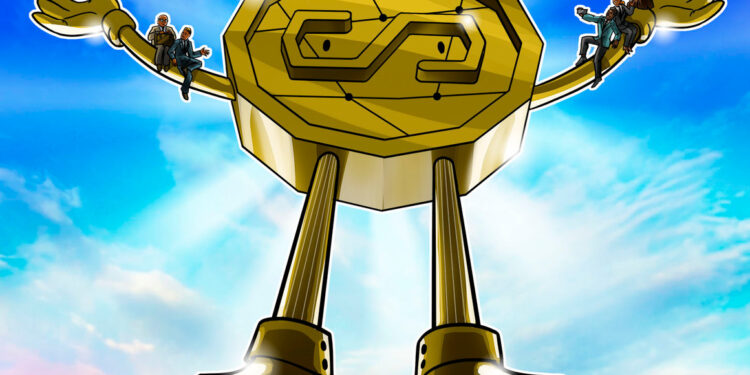- FRAX founder believes stablecoin projects should work together more instead of competing.
- This is the only way to grow and promote the ecosystem.
- Projects are often interdependent and could harm each other.
Stablecoin projects need to work better together to promote their liquidity to each other and the ecosystem as a whole, according to Sam Kazemian, the founder of Frax Finance.
Speaking to Cointelegraph, Kazemian stated that there will never be any real competition between stablecoins as long as the liquidity of the stablecoins grows proportionally to each other through shared liquidity pools and security systems.
Kazemian’s Stablecoin FRAX is a fractional-algorithmic stablecoin in which part of the offer is secured by collateral, and another part is algorithmically secured.
Kazemian explained that the growth in the stablecoin ecosystem is not a “zero-sum game”, as the individual tokens are increasingly intertwined and dependent on the development of the others. .
FRAX uses, among other things, the USD Coin from Circle (USDC) as security. DAI is a decentralized stablecoin managed by the Maker Protocol, which also uses the USDC as collateral for more than half of the tokens in circulation. As FRAX and DAI continue to expand their market capacities, they will likely need more USDC as collateral.
Kazemian explained that it could have a negative impact on the ecosystem if one project decides to drop another.
“People don’t like to say it, but if Maker were to divest its USDC, that would be bad for Circle, because they get returns with it.”
USDC is the key
The current top 3 stablecoins by market capitalization are Tether (USDT), USDC and Binance USD (BUSD). DAI and FRAX are both decentralized stablecoins, which are ranked 4th and 5th respectively.
USDC recorded the largest growth among the three major stablecoins last year. The market capitalization more than doubled last July with 55 billion US dollars. Thus, according to CoinGecko, the coin is getting closer and closer to USDT.
Kazemian believes that USDC is likely to be the most valuable stablecoin for cooperation within the ecosystem due to its acceptance in the industry and probably greater transparency regarding its reserves.
He described the USDC as a “low-risk and low-innovation project” and acknowledged that it served as a basis for further innovation in other stablecoins. He also said:
“We and DAI are the innovation layer over USDC, like the decentralized bank over a classic bank.”
Algo stablecoins do not work
Although the FRAX stablecoin is partially algorithmically stabilized, Kazemian says purely algorithmic stablecoins “just don’t work”.
Algorithmic stablecoins such as Terra USD (UST), which collapsed dramatically in May, maintain their coupling through complicated algorithms. The offer is adapted to market conditions and is not secured with traditional collateral.
“For a decentralized on-chain stablecoin, security is necessary. He does not have to be over-collateralized, as with Maker, for example, but he needs exogenous collateral.”
The death spiral in the ecosystem of Terra became clear when UST, now unnamed in USTC, lost its coupling.
The protocol has subsequently minted new LUNA tokens to ensure that there are enough tokens for the stablecoin. This rapid coinage caused the course of LUNA, which is now called LUNC, to collapse violently. This has triggered a complete sell-off of the tokens in the retail sector and nullified any hope of re-coupling.
In the weeks before the UST decoupling, Terraform Labs founder Do Kwon stated that his project would have to fractionally back up the stablecoin with various types of collateral, especially BTC.
“In the end, even Terra realized that her model would not work,” Kazemian continued. “Therefore, they bought up other tokens.”
By the end of May, Terra had sold almost all BTC worth $3.5 billion.
Terra has also brought down other projects in its collapse, including the Algo stablecoin DEI from Deus Finance, which at the time of writing has also still not regained its peg to the US dollar.









